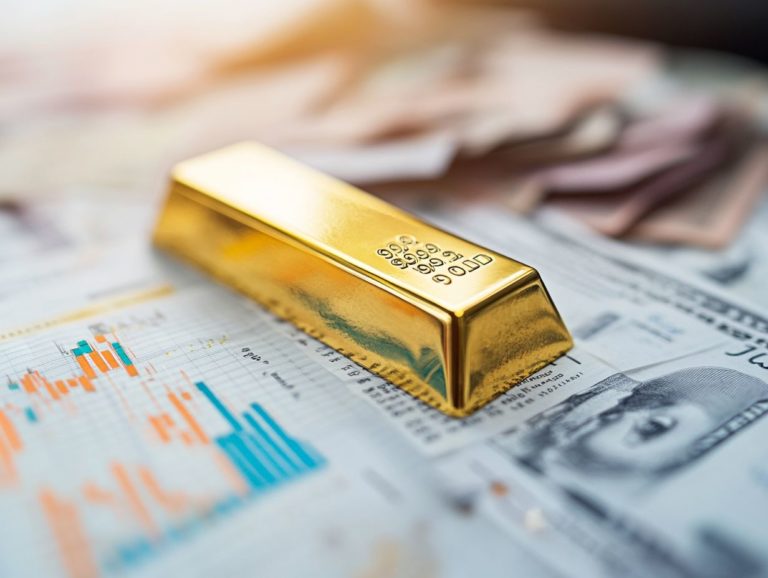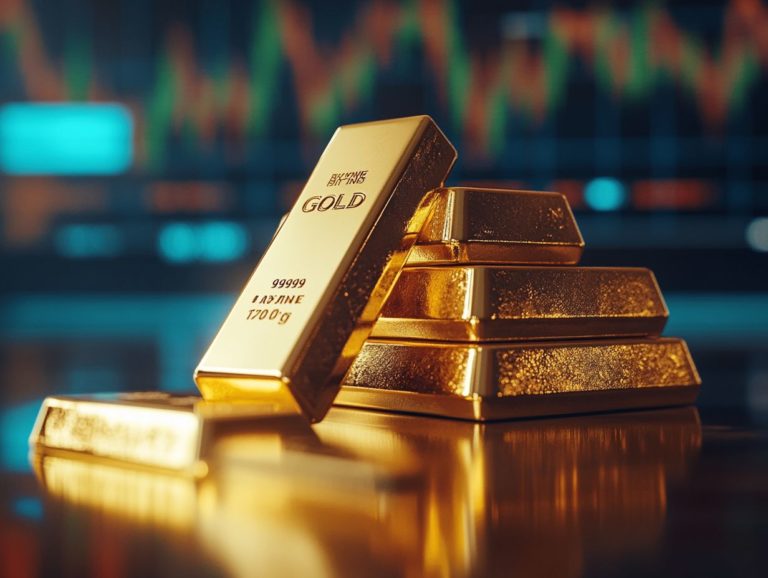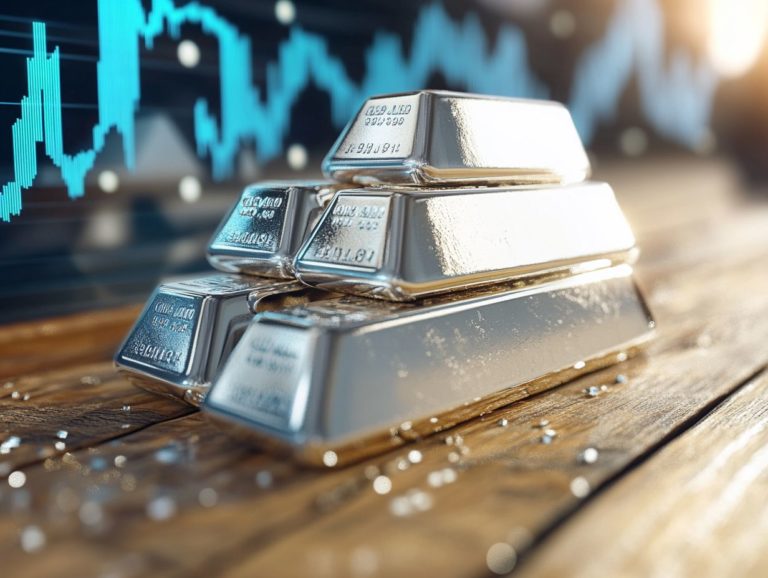Investing in Precious Metals: Market Insights
Investing in precious metals is more exciting than ever! It is often seen as a secure strategy for wealth accumulation and asset protection.
With choices like gold, silver, and platinum at your disposal, these metals carry intrinsic value and a rich historical legacy.
By grasping the various factors that influence their market ranging from economic fluctuations to political happenings you can equip yourself to make well-informed investment choices.
This article delves into the types of precious metals, outlines effective investment strategies, and analyzes current market trends, providing you with crucial insights to successfully navigate this ever-evolving landscape.
Contents
- Key Takeaways:
- Types of Precious Metals
- Factors Affecting Precious Metals Market
- Strategies for Investing in Precious Metals
- Current Trends and Outlook for Precious Metals
- Frequently Asked Questions
- What are precious metals and why should I invest in them?
- What are the different ways to invest in precious metals?
- What factors can affect the price of precious metals?
- Is investing in precious metals risky?
- How can I keep track of the precious metals market?
- Are there any tax implications for investing in precious metals?
Key Takeaways:
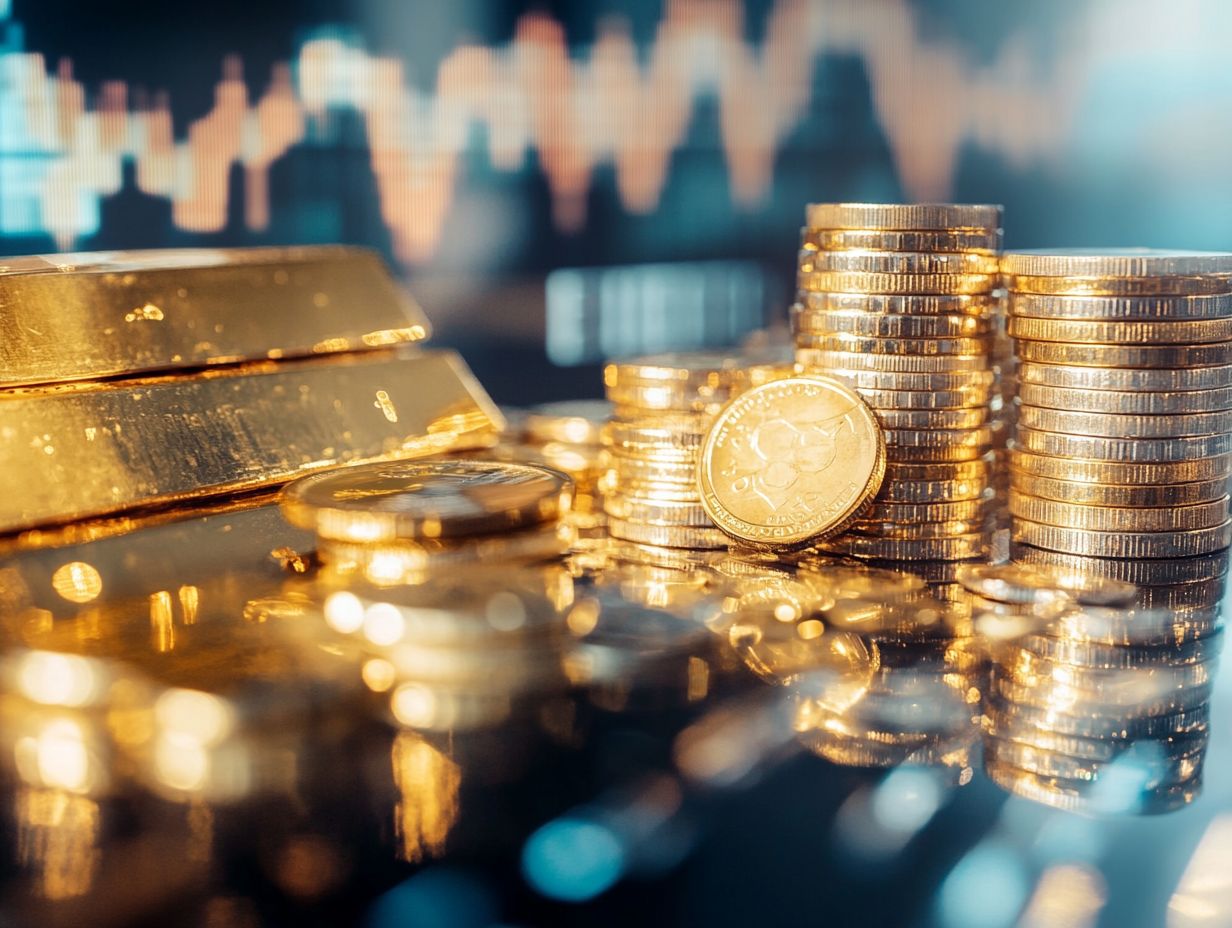
- Precious metals, such as gold, silver, and platinum, are tangible assets that hold value and can serve as a hedge, which helps protect your money during tough times, against economic and political uncertainties.
- Economic and political influences, including inflation, interest rates, and government policies, significantly impact the volatility and performance of the precious metals market.
- Diversification and risk management are crucial strategies for investing in precious metals, whether through physical ownership or paper investments like ETFs or mining stocks.
What are Precious Metals?
Precious metals think gold, silver, platinum, and palladium are rare and naturally occurring treasures that hold significant economic power. You ll find them not only dazzling in jewelry but also playing important roles in various industries and investment portfolios. This makes them essential in the global precious metals market.
Their scarcity, combined with unique properties like corrosion resistance and exceptional conductivity, fuels demand in sectors ranging from electronics to automotive and renewable energy. In terms of investments, these metals serve as a reliable hedge against inflation and economic uncertainty.
However, the market for precious metals is not without its rollercoaster moments; price fluctuations are influenced by factors such as mining operations, geopolitical tensions conflicts between countries and global supply-demand dynamics.
Consumer confidence plays a crucial role here too when market sentiments are strong, buying often surges. Precious metals are more than just shiny objects; they serve as vital indicators in economic indices, reflecting not only investment behaviors but also broader economic conditions. For anyone keeping a keen eye on financial trends, understanding these metals is essential.
Why Invest in Precious Metals?
Investing in precious metals has become increasingly appealing, thanks to their reputation as a safe haven asset, which helps protect your money during tough times, and their remarkable ability to hedge against economic uncertainties and inflation factors influenced by shifting investor sentiment and regional economic conditions.
These investments protect your wealth during tough times and enhance your portfolio s diversification, which is essential for achieving long-term financial stability. When market opportunities arise, whether from geopolitical tensions or economic downturns, precious metals often showcase their resilience, attracting those looking to safeguard their wealth.
Historically, assets like gold and silver have performed impressively, providing a counterbalance to market volatility. By incorporating these assets into your strategy, you can build a more robust investment approach that is less vulnerable to the unpredictability of global markets.
Types of Precious Metals
The primary types of precious metals you ll encounter include gold, silver, platinum, and palladium, each fulfilling distinct roles in investment, manufacturing, and jewelry.
These metals differ considerably in their market dynamics, industrial demand, and investment allure, which enhances their unique standings within the precious metals landscape.
Gold, Silver, Platinum, and More
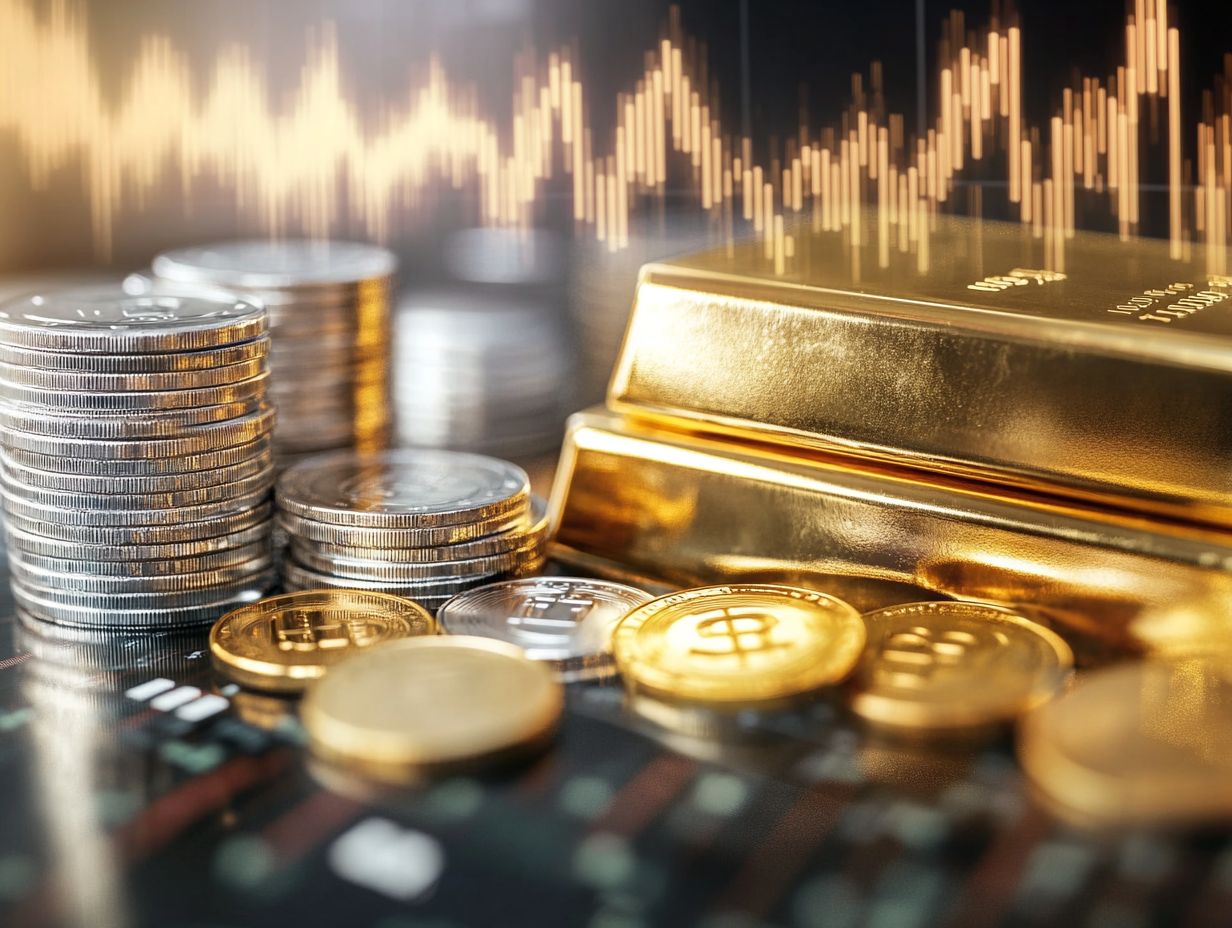
Gold and silver are the most recognized precious metals, often leading market trends. Platinum and palladium also play significant roles due to their industrial applications in automotive demand and technology, which influence prices and speculation.
Each metal has unique characteristics that cater to different sectors. Gold is often viewed as a traditional safe haven during economic uncertainty, while silver experiences fluctuations tied to manufacturing demand, reflecting its industrial use. Platinum and palladium are crucial in catalytic converters, devices in cars that help reduce pollution.
However, production capacities face hurdles from geopolitical tensions and mine sustainability, impacting market dynamics. As an investor, monitoring these metals is essential, as their prices respond to evolving economic conditions and consumer preferences. This shows how closely historical trends connect with today’s market demands.
Factors Affecting Precious Metals Market
The precious metals market is shaped by a complex tapestry of factors:
- Economic conditions
- Investment demand
- Supply dynamics
- Consumer confidence
- Geopolitical tensions
Understanding this intricate interplay can provide you with valuable insights into the trends and fluctuations within the market.
Economic and Political Influences
Geopolitical tensions and fluctuating economic conditions significantly influence sentiment toward precious metals, often resulting in increased demand during uncertain times.
For instance, when trade wars flare up in the Asia Pacific, investors often turn to gold and silver, causing prices to surge and altering market dynamics. Similarly, in North America, economic downturns or political instability lead many to seek these commodities as safeguards against inflation and currency devaluation.
This behavior highlights a trend where investors prioritize stability and security, creating compelling opportunities in the market for precious metals dealers.
By closely observing demand shifts in response to these events, you can gain valuable insights that inform your investment strategies and help you navigate broader market trends.
Strategies for Investing in Precious Metals
To successfully invest in precious metals, you need a sharp understanding of market dynamics. You can choose between physical assets and paper investments, each offering unique advantages and risks.
Pay attention to how market fluctuations and economic conditions influence decisions, as these factors are crucial in your investment journey.
Physical vs. Paper Investments
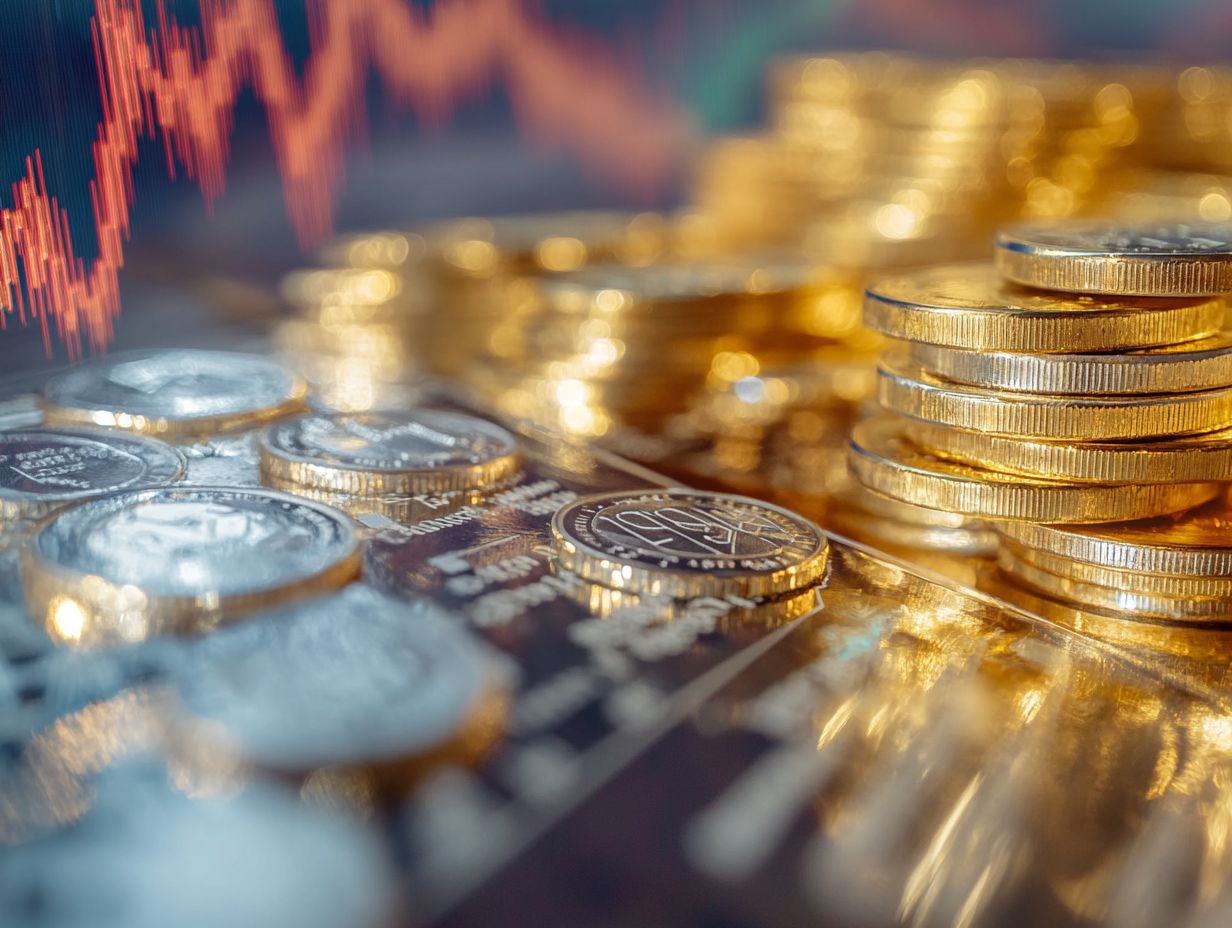
When contemplating investments in precious metals, you can choose between physical assets like bullion and coins, and paper investments such as gold exchange-traded funds. Each option presents unique advantages.
Many investors prefer physical investments for their tangible nature, providing a reassuring sense of security. However, challenges include storage costs and potential liquidity issues; selling physical bullion can take time, unlike quick trades in the paper market.
Conversely, paper investments offer greater market accessibility. You can trade quickly without the hassle of physical storage or insurance, enhancing your liquidity. That said, these options may not carry the same intrinsic value as their tangible counterparts. Ultimately, the choice depends on your investment strategy and risk tolerance, making it a decision worth careful consideration.
Stay informed and act now to make the most of your investments in precious metals!
Diversification and Risk Management
Diversification is key to your investment growth strategy. It is especially important for precious metal investments. By reducing the risks associated with market volatility and price fluctuations, you can better protect your portfolio.
Spreading your investments across different types of investments helps shield your portfolio from potential downturns. This strategy goes beyond just precious metals like gold and silver typically viewed as safe havens during economic instability. It also includes other asset classes such as stocks, bonds, and real estate.
As consumer trends evolve and market challenges arise, maintaining a well-balanced portfolio allows for better risk management. By embracing diversification, you can potentially enhance your long-term returns while minimizing the impact of market uncertainties.
Current Trends and Outlook for Precious Metals
Exciting trends in the precious metals market are shaping its future. Stay ahead by understanding the sophisticated interplay of factors that influence market performance. Analysts are predicting shifts in demand trends, along with emerging opportunities driven by technological advancements and evolving consumer preferences.
Market Performance and Future Predictions
The performance of precious metals is closely linked to shifting demand dynamics and future forecasts. These factors are influenced by investment demand and external economic conditions that can cause substantial price fluctuations.
As consumer confidence wavers and geopolitical tensions arise, it becomes increasingly important to monitor the supply dynamics of these valuable commodities. Current trends suggest that declining mine outputs, combined with rising production costs, may push prices higher. This presents lucrative opportunities for diversifying your portfolio.
Furthermore, shifts in global economic policies and trade agreements can also influence market behavior. Remaining vigilant towards these changes can help you make informed decisions about your future investments in precious metals.
Frequently Asked Questions
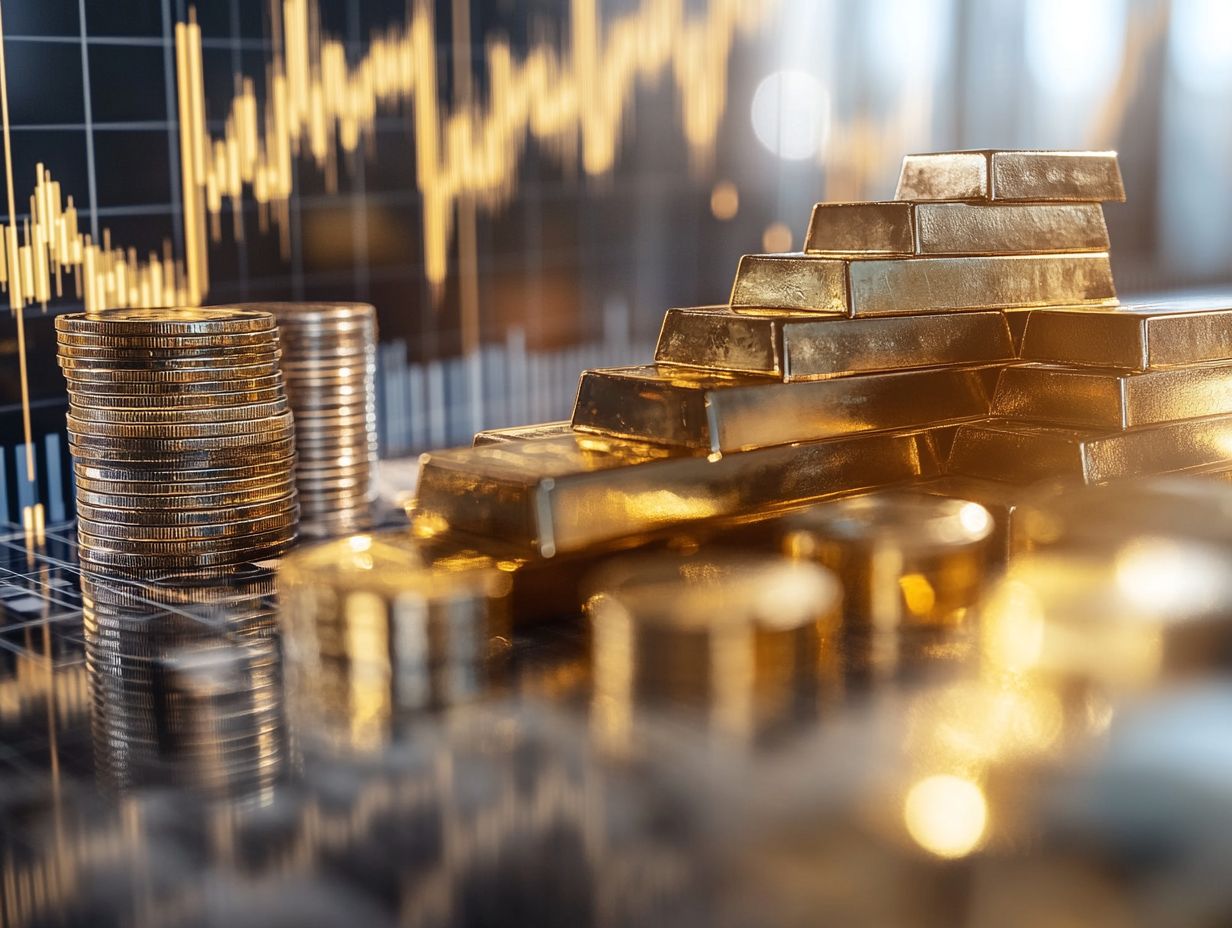
What are precious metals and why should I invest in them?
Precious metals, such as gold, silver, platinum, and palladium, are rare and valuable natural resources. They are considered a safe-haven investment and can provide diversification to your portfolio, potentially protecting against economic downturns and inflation.
What are the different ways to invest in precious metals?
Investing in precious metals can be done through physical ownership, such as buying coins or bars, or through financial instruments like stocks, mutual funds, and exchange-traded funds (ETFs). You can also invest indirectly through companies involved in the mining and production of precious metals.
What factors can affect the price of precious metals?
The price of precious metals can be influenced by a variety of factors, including supply and demand, economic conditions, political events, and currency fluctuations. Changes in interest rates and inflation can also impact their value.
Is investing in precious metals risky?
Like any investment, there is always a level of risk involved. The value of precious metals can fluctuate, and there is no guarantee of returns. However, investing in precious metals is generally considered a lower-risk option compared to other investments due to their long-standing value and stability.
How can I keep track of the precious metals market?
You can stay updated on current prices and trends in the precious metals market through financial news sources, online market trackers, and by consulting with a financial advisor. Regularly monitoring the market is important for making informed decisions if you are investing in precious metals.
Are there any tax implications for investing in precious metals?
Yes, there may be tax implications when buying or selling precious metals. It’s important to consult with a tax professional to understand any potential taxes or reporting requirements. Some forms of precious metals, such as bullion, may be subject to different tax rates than others.











